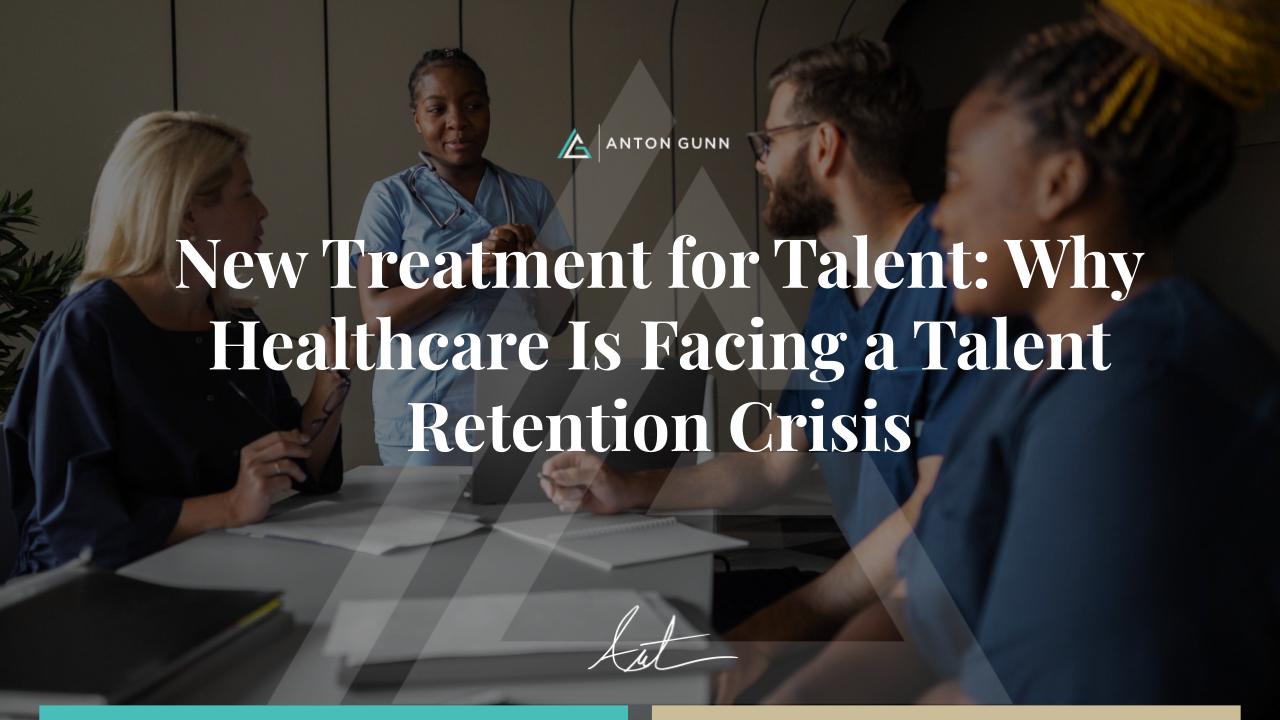If you’re in HR or a leadership role in the healthcare industry, you know we’re in the middle of a talent retention crisis. The pressures of the past few years have pushed healthcare workers to the brink, and many are walking away from the profession altogether. Burnout, staffing shortages, and a culture that often focuses more on the bottom line than on people have created a perfect storm. In a recent Medscape report, 70 percent of doctors say workplace culture is just as important as compensation. If you don’t fix the culture, your best people will leave. When that happens, it’s not just your organization that suffers—patient care does too.
As a former hospital executive and healthcare advisor, I’ve spent years working with hospitals, health systems, drug companies, and insurers on leadership and culture challenges. I can tell you that the workforce retention challenge is critical. But it’s not hopeless. There are strategic steps you can take right now to turn things around.
The Challenges We’re Facing in Healthcare
- Burnout and Emotional Exhaustion: Let’s be honest—burnout in healthcare isn’t new, but the pandemic has taken it to an entirely new level. Your employees are dealing with trauma, long shifts, and emotional exhaustion day in and day out. Without proper support, it’s no wonder so many are leaving the field.
- Staffing Shortages: We’ve been dealing with staffing shortages for years, but now it’s hitting a breaking point. With so many experienced professionals leaving, those who remain are stretched thinner than ever. This creates a vicious cycle—more work, more stress, more burnout, and even more turnover.
- Cultural Disconnect: The traditional, hierarchical culture in many healthcare institutions can leave employees feeling undervalued and unheard. When your people don’t feel connected to the organization or its mission, it’s hard for them to stay engaged and committed.
Three Strategies to Retain Talent and Build a Better Culture in Healthcare
1. Prioritize Employee Well-Being Like You Prioritize Patient Care
If there’s one thing I’ve learned, it’s that you can’t take care of patients if you’re not taking care of your people. Employee well-being has to be at the center of your retention strategy. This means providing mental health resources, encouraging work-life balance, and creating an environment where your staff feels supported and valued.
What You Can Do Now: Implement a “Resilience Rounds” program where leaders regularly check in with staff to discuss their well-being, listen to their concerns, and offer support. This kind of proactive care shows your employees that you’re serious about their health and happiness.
2. Redesign Workflows to Lighten the Load
Staffing shortages aren’t going away overnight, but you can ease the burden on your employees by redesigning workflows and leveraging technology. Look for ways to automate routine tasks so your people can focus on what really matters—patient care. Cross-training your staff can also help distribute workloads more evenly, making life easier for everyone.
What You Can Do Now: Conduct a workflow audit to identify inefficiencies and areas where technology can reduce administrative burdens. Launch cross-training initiatives, so your team can step in when needed, creating a more flexible and resilient workforce.
3. Build a Culture of Recognition and Growth
Recognition and career development are often ignored in healthcare but are crucial for retention. Your people need to know that their hard work is appreciated and that they have a future in your organization. This means regular acknowledgment of their efforts and clear opportunities for professional growth.
What You Can Do Now: Start a “Healthcare Heroes” program to regularly recognize and reward employees for their contributions, both big and small. Pair this with personalized career development plans that align with each employee’s goals and aspirations so they see a clear path forward with your organization.
Conclusion
The challenges in healthcare are complex, but they’re not insurmountable. By prioritizing employee well-being, redesigning workflows, and building a culture of recognition and growth, you can create a work environment that retains top talent and delivers the highest level of patient care. As someone who’s worked across multiple industries, I’ve seen how transformative these changes can be—and I know they can work in healthcare too.
If you’re ready to tackle these challenges head-on and need guidance on where to start, let’s connect. Together, we can build a culture that keeps your best people engaged, fulfilled, and committed to providing the care your patients deserve.
Helpful resource – How to Start Turning Around Your Workplace Culture
I would love to hear your thoughts. Share your experiences and tips for addressing these issues in your workplace. Let’s keep the conversation going and create a future where all voices can be heard. If you’re looking for a speaker to inspire and guide your organization toward a healthier company culture, consider booking me for your next event. Also, don’t forget to connect with me on LinkedIn.







